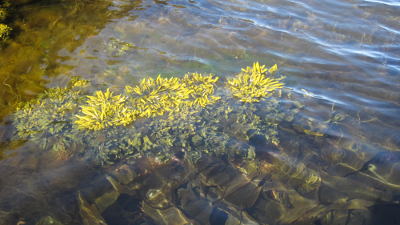Using AI to control energy for indoor agriculture
30 September 2024
Published online 18 September 2016
Algae, previously overlooked, can play an important role in trapping carbon dioxide from the atmosphere.

© Carlos M. Duarte
The study doubles previous estimates of coastal macroalgae’s capacity to capture and store atmospheric CO2, a long-term process called carbon sequestration.
Generally, macroalgae contribute to oceanic photosynthesis, and until this study, scientists thought that its photosynthetic production was released back into the atmosphere as CO2. Most macroalgae grow on rocky shores, where detritus cannot be buried in sediments, so they thought it was releases into the water, where it would be decomposed by bacteria and released back as CO2.
But these researchers are now contesting this. “Our analysis shows that a large fraction of their photosynthetic production is sequestered into marine soils or the deep sea or both,” says Carlos M. Duarte, a marine scientist at King Abdullah University of Science and Technology, and co-author of this study.
According to Duarte, macroalgae can globally sequester CO2 roughly equivalent to emissions of 35 million Saudi citizens.
Macroalgae often attach to floating structures that keep them adrift on the surface. Duarte and his team thereby suggest two modes by which macroalgae are transported to the deep ocean and sediments, where their CO2 content is sequestered; dislodgment during storms and “ballasting” of the macroalage. The latter happens when the algae attach themselves to stones and boulders that eventually sink into the deep sea.
“Management actions can help maintain such carbon sinks by conserving kelps and macroalgal forests,” says Duarte.
doi:10.1038/nmiddleeast.2016.135
Stay connected: